Experience a Day in Japan’s Past: The Culture and History of Saitama’s Musashi Ichinomiya Hikawa Shrine
features
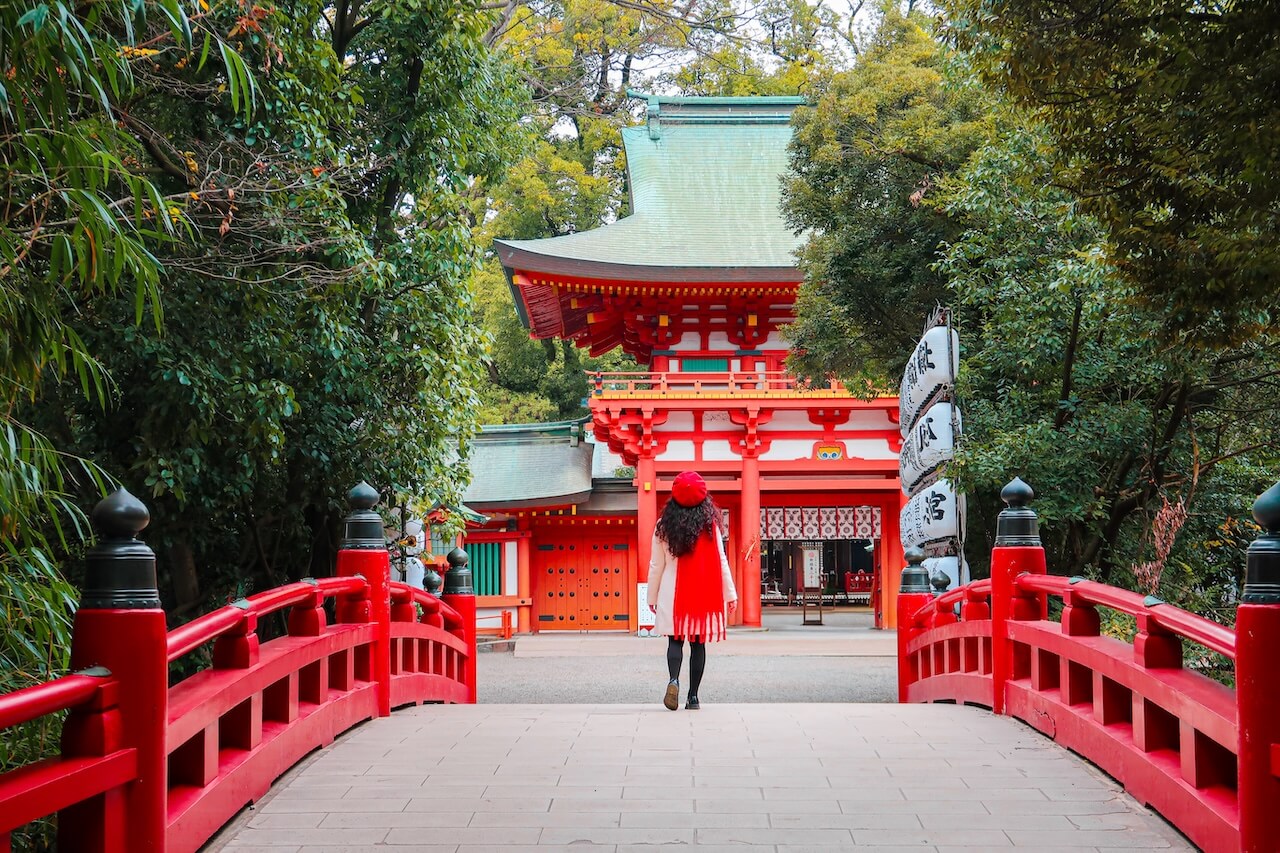
Step into a world where history and culture come alive at Musashi Ichinomiya Hikawa Shrine, a sacred site with over 2,400 years of history, exploring its highlights and learning fascinating trivia and proper visiting etiquette. Discover the surprising connection between a historic ship that shaped Japan's modernization and this ancient shrine! Continue on your journey with visits to two cultural spots showcasing traditional Japan; the Iwatsuki Doll Museum, to get immersed in Iwatsuki’s cherished “ningyo” doll culture dating back to the Edo period, the Omiya Bonsai Art Museum, Saitama, to discover the serene artistry of Omiya Bonsai. Whether you're a history lover, culture enthusiast, or curious traveler, this Saitama itinerary promises a day filled with discovery!
Updated on:2025.06.17
Musashi Ichinomiya Hikawa Shrine - A Sacred Site With 2,400 Years of History
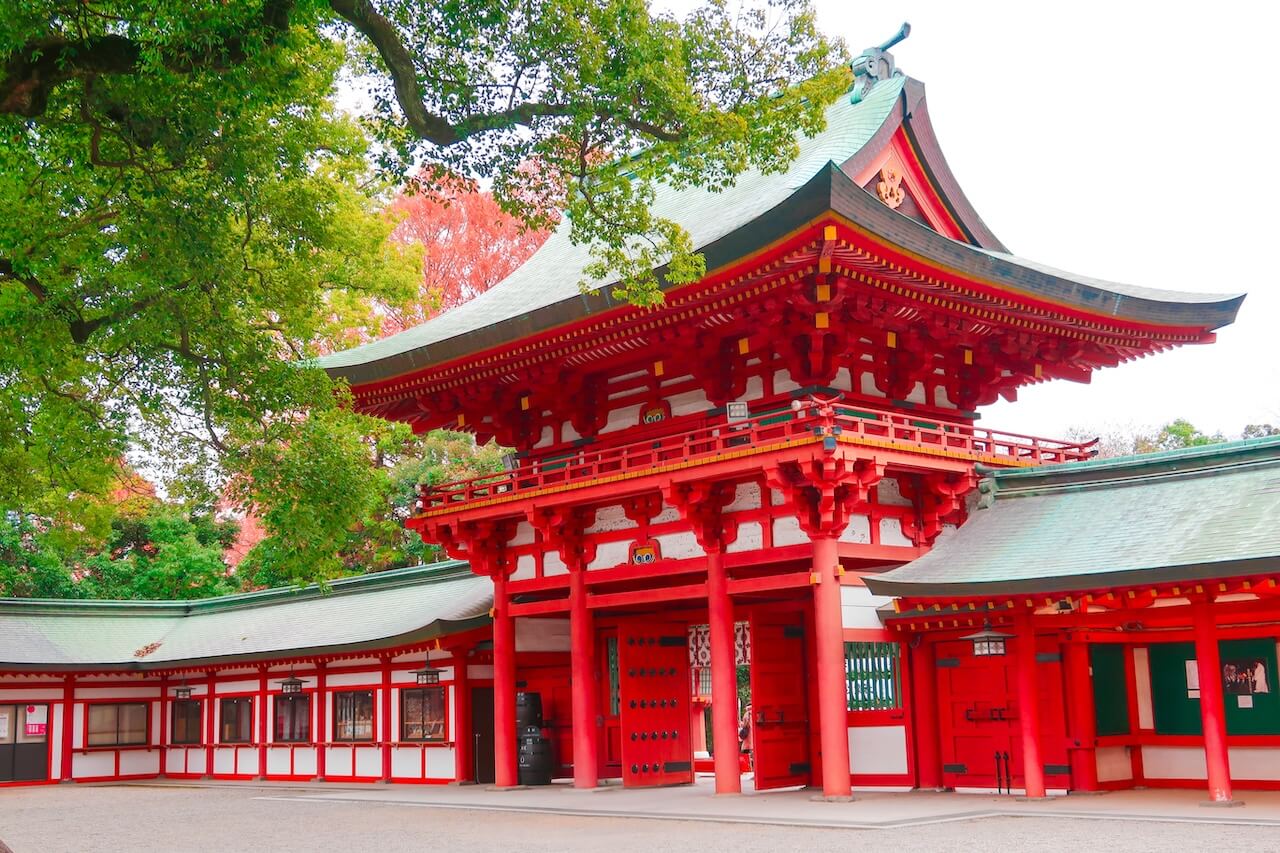
Musashi Ichinomiya Hikawa Shrine is located in Omiya, Saitama, about 30 minutes north of Tokyo by train. The name “Omiya” means “great shrine” in Japanese and is a tribute to Musashi Ichinomiya Hikawa Shrine’s deep-rooted significance as the spiritual heart of the region.
With over 2,400 years of history, it is one of the oldest and most significant shrines in the Kanto region, holding the prestigious title of “Ichinomiya,” or “highest-ranking shrine.” The shrine is believed to be particularly beneficial for matchmaking, attracting visitors who seek blessings in love and personal relationships.
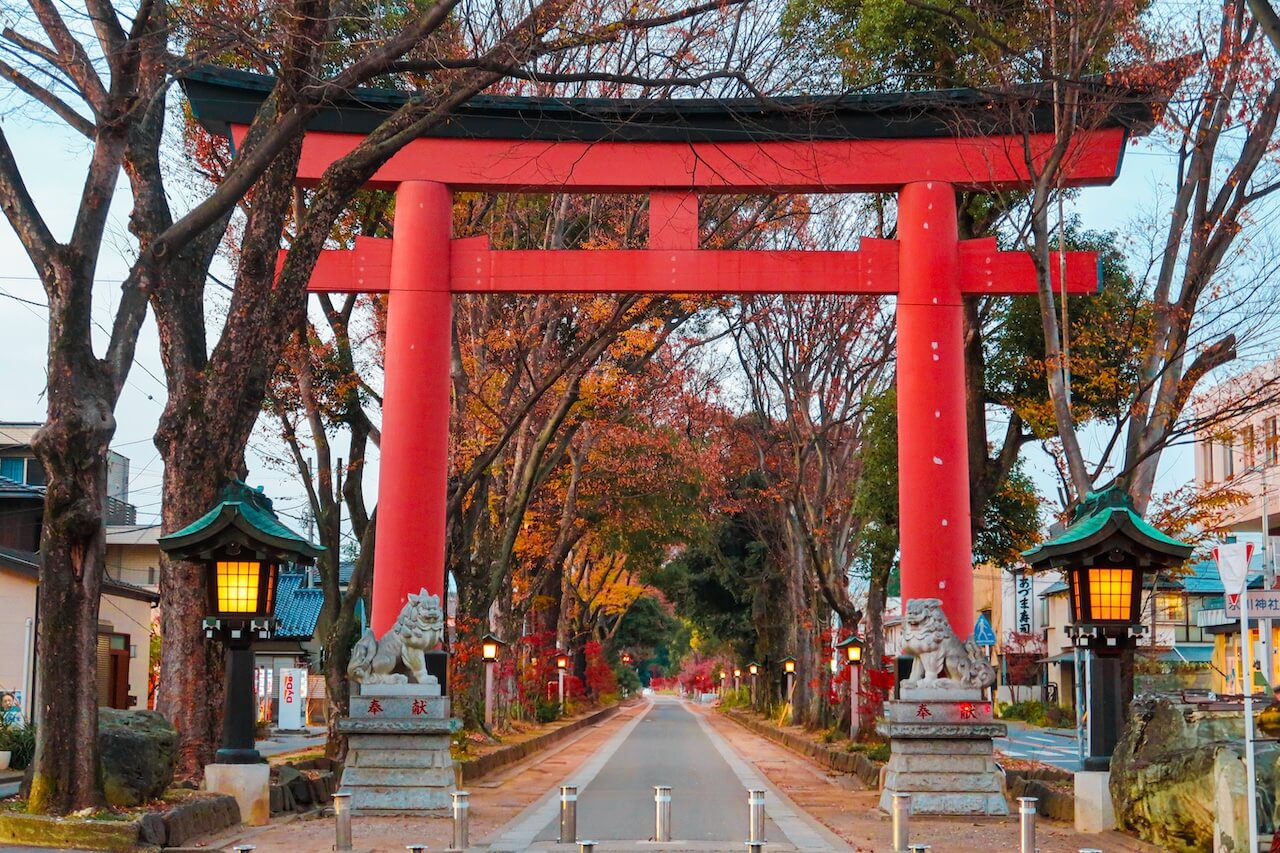
Musashi Ichinomiya Hikawa Shrine was established around 473 BC, when the Izumo clan—a group of officials from the Izumo Province (modern-day eastern Shimane Prefecture) who governed provincial territories called “kuni”—was appointed by the Imperial Court as the head of Musashi Province, in present-day Saitama. They brought with them the practice of worshiping Susanoo-no-Mikoto, the Shinto deity of storms and seas, which is now enshrined at Musashi Ichinomiya Hikawa Shrine.
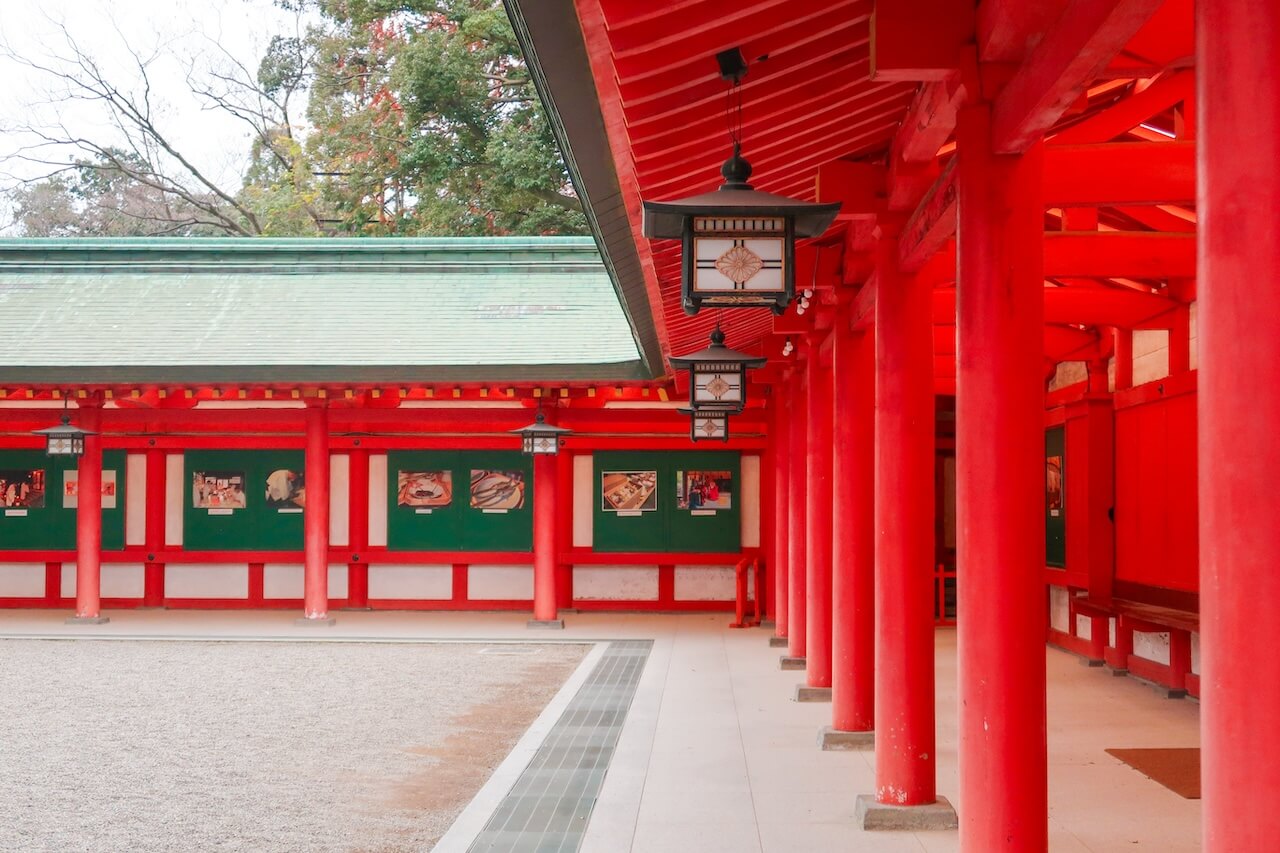
Musashi Ichinomiya Hikawa Shrine flourished during the Edo period (1603-1868), especially due to its location in Omiya-juku, a post town on the Nakasendo, the key route connecting Edo (modern Tokyo) to Kyoto. Emperor Meiji passed through the shrine in 1868 when he relocated from Kyoto to Tokyo, stopping to worship here. He designated the shrine an imperial shrine and the Guardian of Musashi Province.
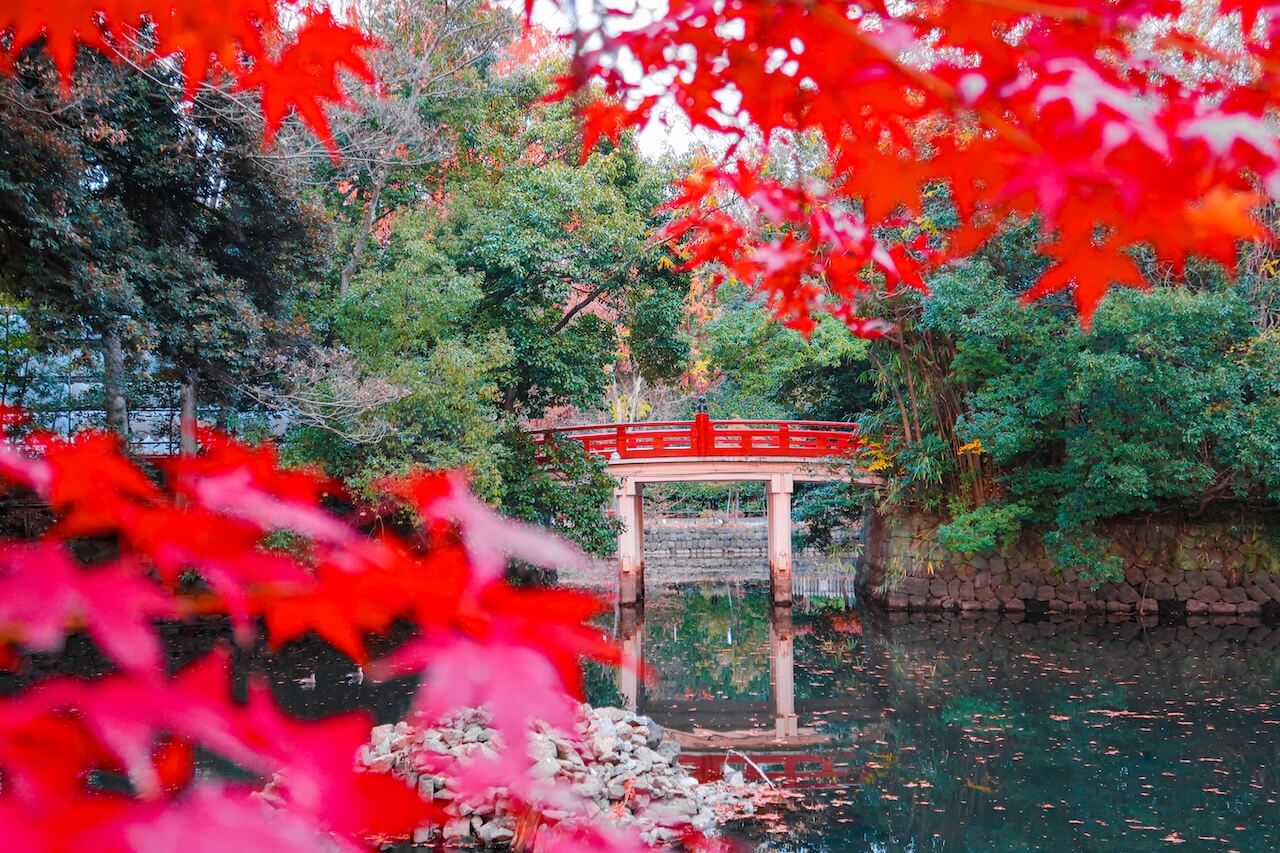
The vast shrine complex blends quaint wooden buildings with majestic vermilion “romon” gates and massive “torii” gates.
But perhaps its most striking feature is the pathway leading to the shrine, the longest in Japan! Stretching 2 kilometers, it is lined with over 650 trees, creating a beautiful green canopy in the warmer months and a breathtaking display of autumn colors in fall. The approach ends at a picturesque red bridge crossing over Kamiike Pond, where in early December you can also admire vibrant autumn hues draping the bridge that are reflected on the water’s surface.
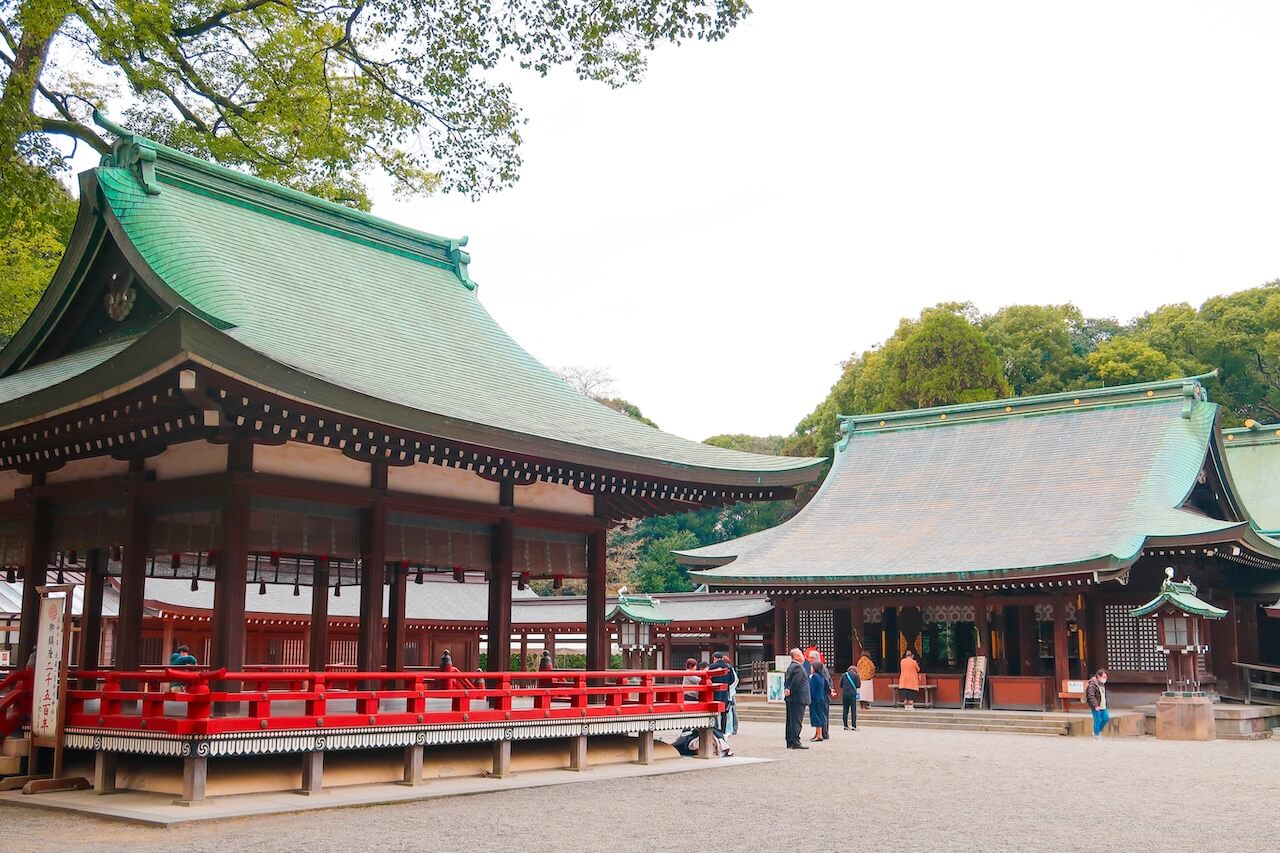
Etiquette When Visiting a Shrine in Japan
When visiting a Shinto shrine like Musashi Ichinomiya Hikawa Shrine, it’s important to follow certain traditions to show respect for the “kami” (deities) and the sacred space.
The first step is to purify yourself at the “temizuya,” a water basin where visitors wash their hands and mouth before entering the shrine. This purification process symbolizes cleansing the body and mind. Use the ladle provided to scoop water and wash your hands and mouth in the following order: first, wash your left hand, then your right hand, rinse your mouth with water from the ladle, and finally wash the handle of the ladle.
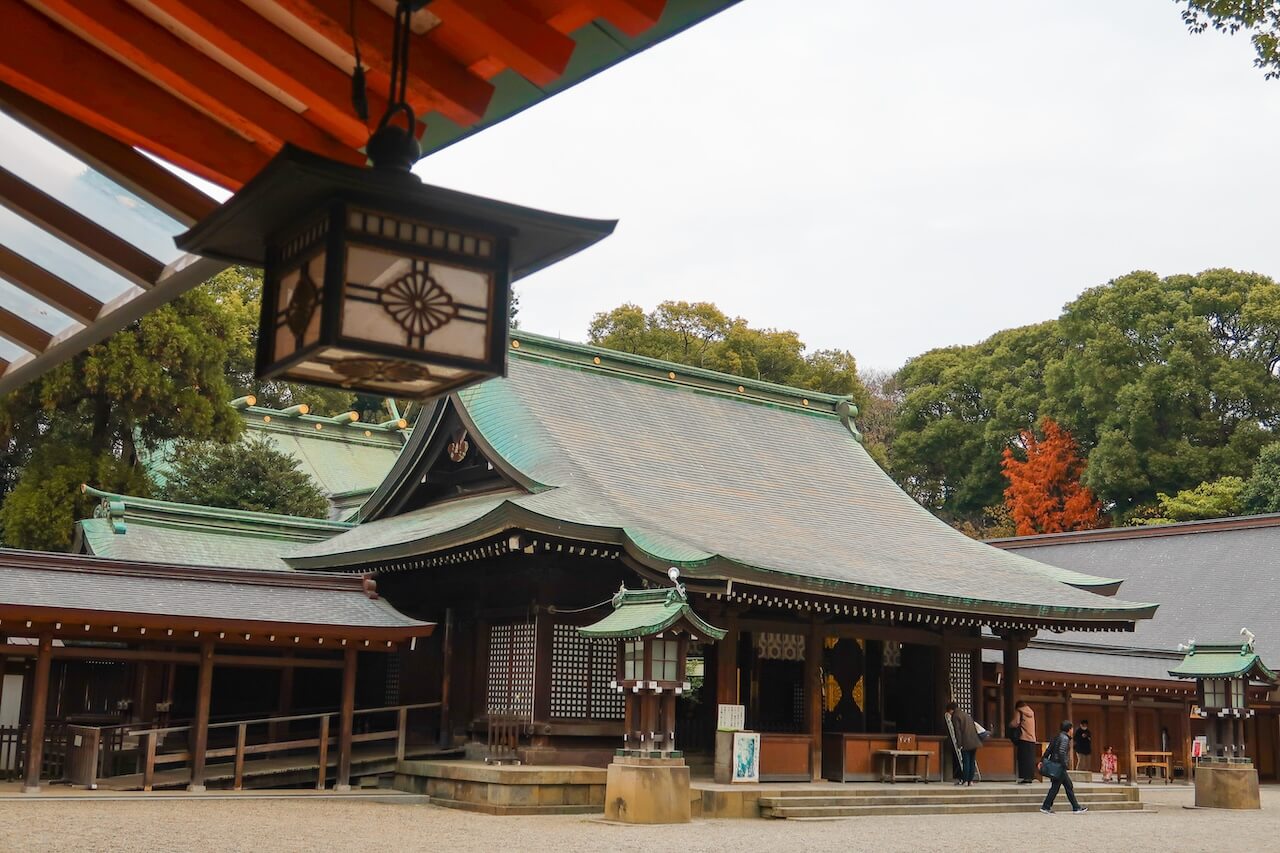
Once inside the shrine, visitors can offer a prayer by making a monetary offering at the offering box. After this, perform two deep bows, followed by two claps of the hands, and bow once more after praying. This sequence is known as “hairei” and is a sign of respect for the kami (gods).
As you explore the shrine, it’s important to behave respectfully—keep noise to a minimum, dress modestly, and be mindful of others. The shrine is a sacred place, and by following these rituals, you’ll contribute to maintaining its peaceful and spiritual atmosphere.
4 Fascinating Facts About Musashi Ichinomiya Hikawa Shrine You Need to Know Before Visiting
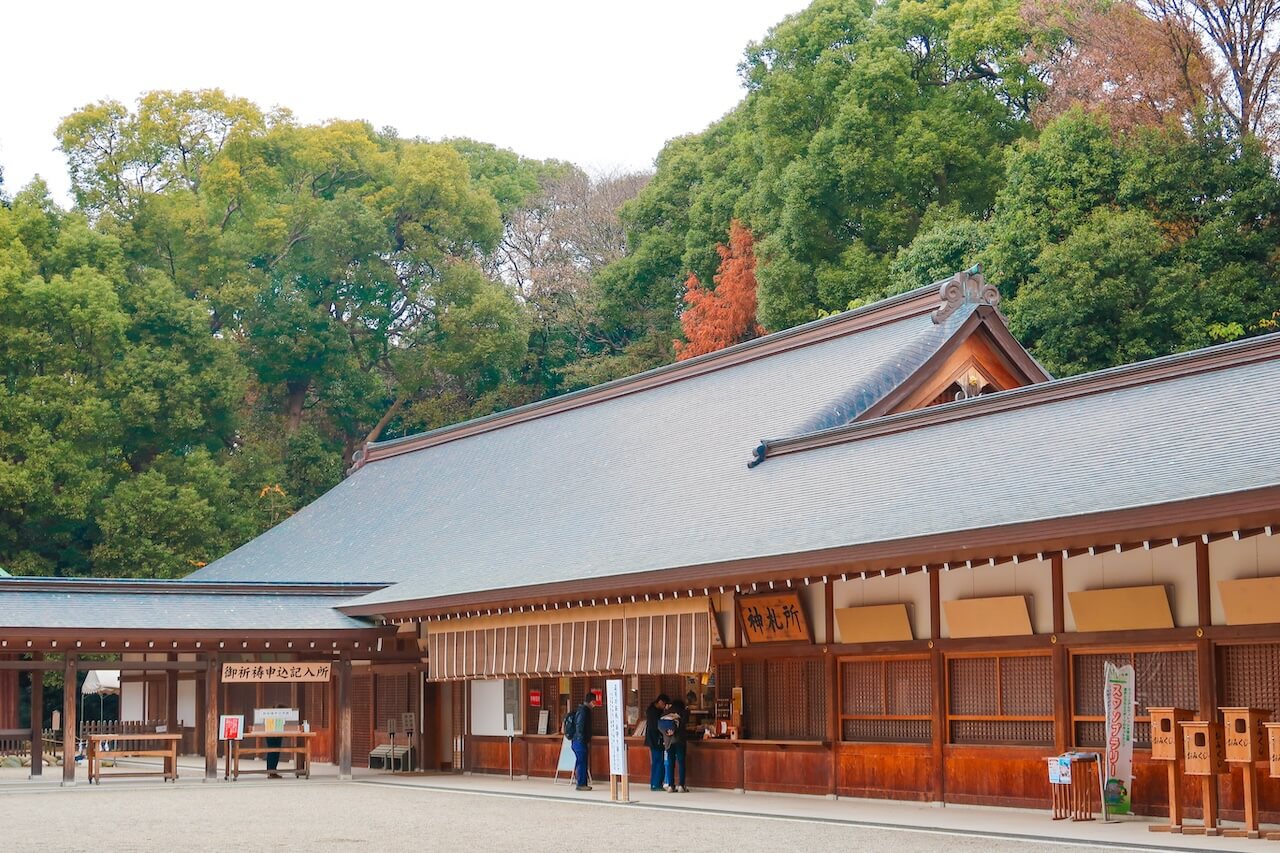
1.The Surprising Connection Between the 2,400-Year-Old Musashi Ichinomiya Hikawa Shrine and the Hikawa Maru: A Ship that Shaped Japan’s Modernization
The name of one of Japan’s most famous ships, the “Hikawa Maru,” was inspired by Musashi Ichinomiya Hikawa Shrine. Launched in 1930 as a luxury passenger ship connecting Japan and Seattle, the ship crossed the Pacific a total of 254 times, carrying over 25,000 passengers. The ship’s interior, cutting-edge for its era, featured the sacred “yakumo” crest of Musashi Ichinomiya Hikawa Shrine, which can also be seen within the shrine grounds.
Today, the Hikawa Maru is moored in Yokohama, where it still houses a Shinto altar enshrining a branch deity of Musashi Ichinomiya Hikawa Shrine. Throughout its journeys across the Pacific, the ship sailed under the protection of the gods of Musashi Ichinomiya Hikawa Shrine, which may explain why the Hikawa Maru has remained well preserved to this day. The ship’s captain continues to visit Musashi Ichinomiya Hikawa Shrine every year to pray for the safety and prosperity of the vessel.
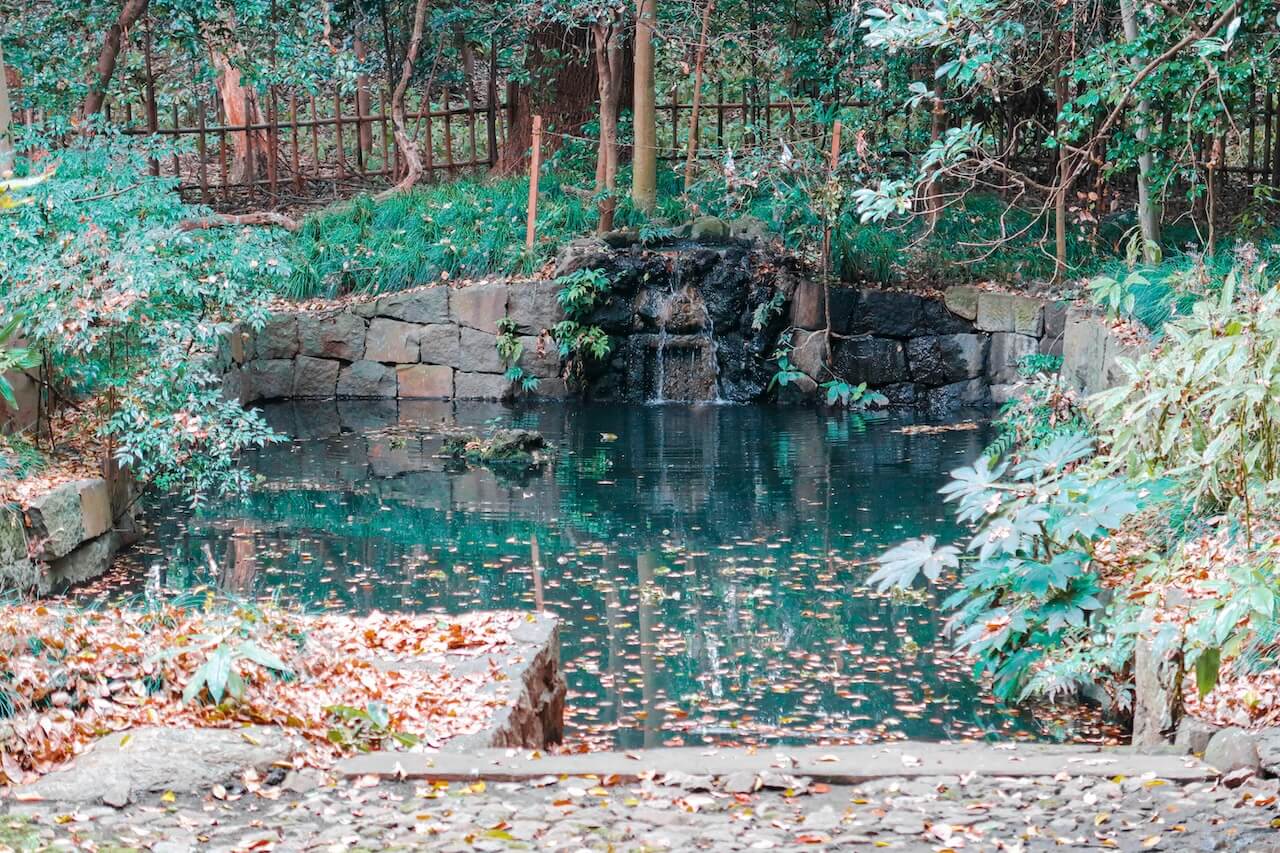
2. A Traditional Dance Stage That Comes to Life Once a Year
Musashi Ichinomiya Hikawa Shrine is home to a dance stage built specifically for the “Azuma Asobi,” a traditional ritual dance performed only during the Rei Sai Annual Festival on August 1st. The tradition dates back to the reign of Emperor Meiji, who permitted Musashi Ichinomiya Hikawa Shrine to receive imperial envoys and perform rituals on imperial orders.
3. The Journey of a Giant Torii Gate
The approach to Musashi Ichinomiya Hikawa Shrine features three large entrance gates: Ichi no Torii (the first gate), Ni no Torii (the second gate), and San no Torii (the third gate), in order of distance from the shrine. Among them, the Ni no Torii stands out as the largest wooden torii gate in the Kanto region. Donated by Meiji Jingu Shrine in 1976, it is crafted from 1,300-year-old cypress wood and stands 13 meters tall.
4. The Sacred Spring Behind Musashi Ichinomiya Hikawa Shrine
The Snake Pond (Ja-no-ike) is one of the most mystical spots within the shrine. A vital water source since ancient times, it is said that the location of the shrine was chosen because of this spring, making the pond the birthplace of Musashi Ichinomiya Hikawa Shrine.
The name of the pond derives from the belief that snakes, considered incarnations of water gods in Japanese folklore, are connected to Susanoo-no-Mikoto, whose legend includes the defeat of Yamata no Orochi, a legendary eight-headed and eight-tailed Japanese serpent.
Address: 1-407, Takahana-cho, Omiya-ku, Saitama-shi, Saitama
Access: About a 15-minute walk from JR Omiya Station East Exit
About a 10-minute walk from Kita Omiya Station on the Tobu Urban Park Line (Tobu Noda Line)
Must-Try Cultural Experiences Near Musashi Ichinomiya Hikawa Shrine
Exploring Musashi Ichinomiya Hikawa Shrine provides more than just a spiritual experience—it’s also the perfect starting point to discover the surrounding area’s rich culture. Easily accessible from the shrine are the Iwatsuki Doll Museum, a fascinating destination to dive into the history of Iwatsuki dolls, and the Omiya Bonsai Art Museum, Saitama, the ideal place to immerse yourself in the world of Omiya Bonsai.
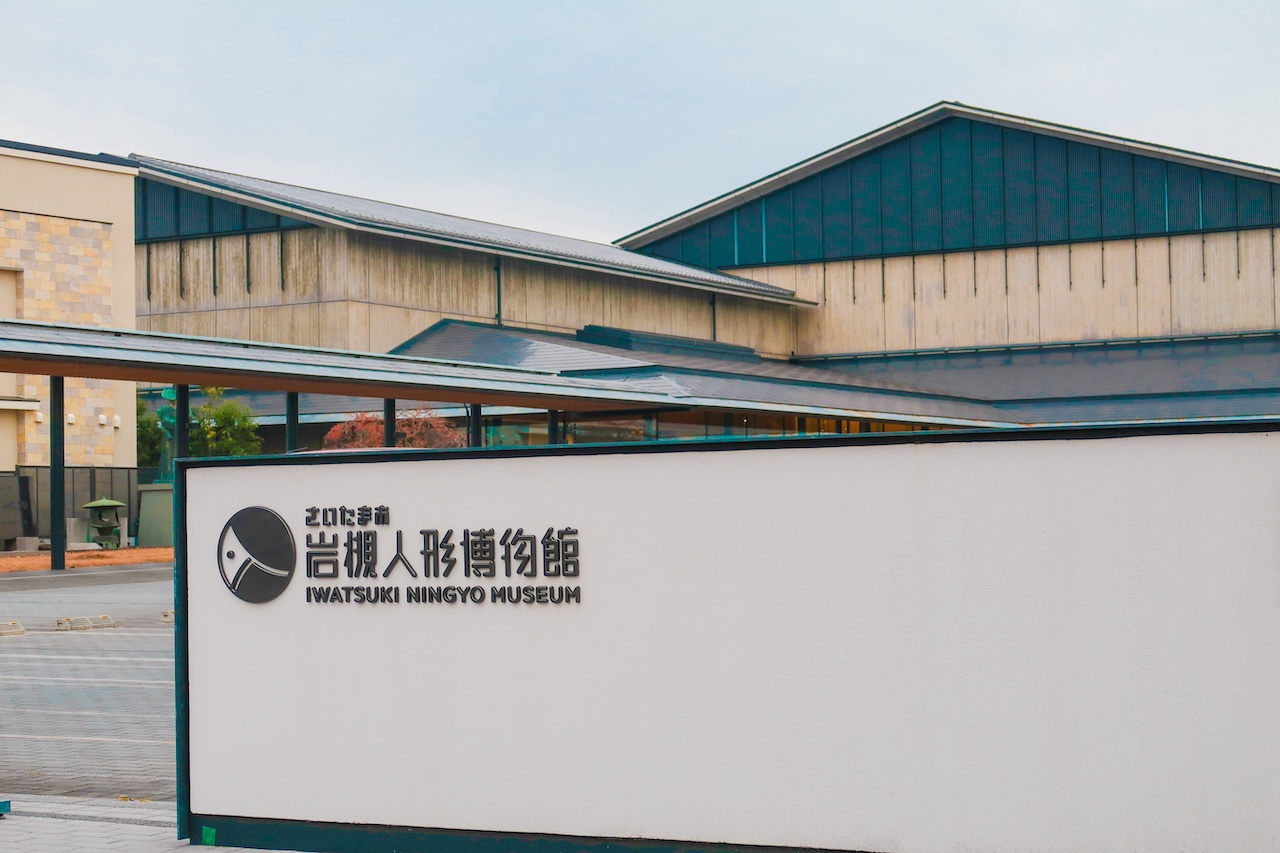
Experience the Charm of Iwatsuki’s Traditional Ningyo Dolls
Dolls in Japan have a rich ancient history and were originally used in rituals to ward off evil and bring good fortune. As ningyo culture evolved, dolls were created not only for their religious significance, but also for aesthetic enjoyment, blending tradition with artistry.
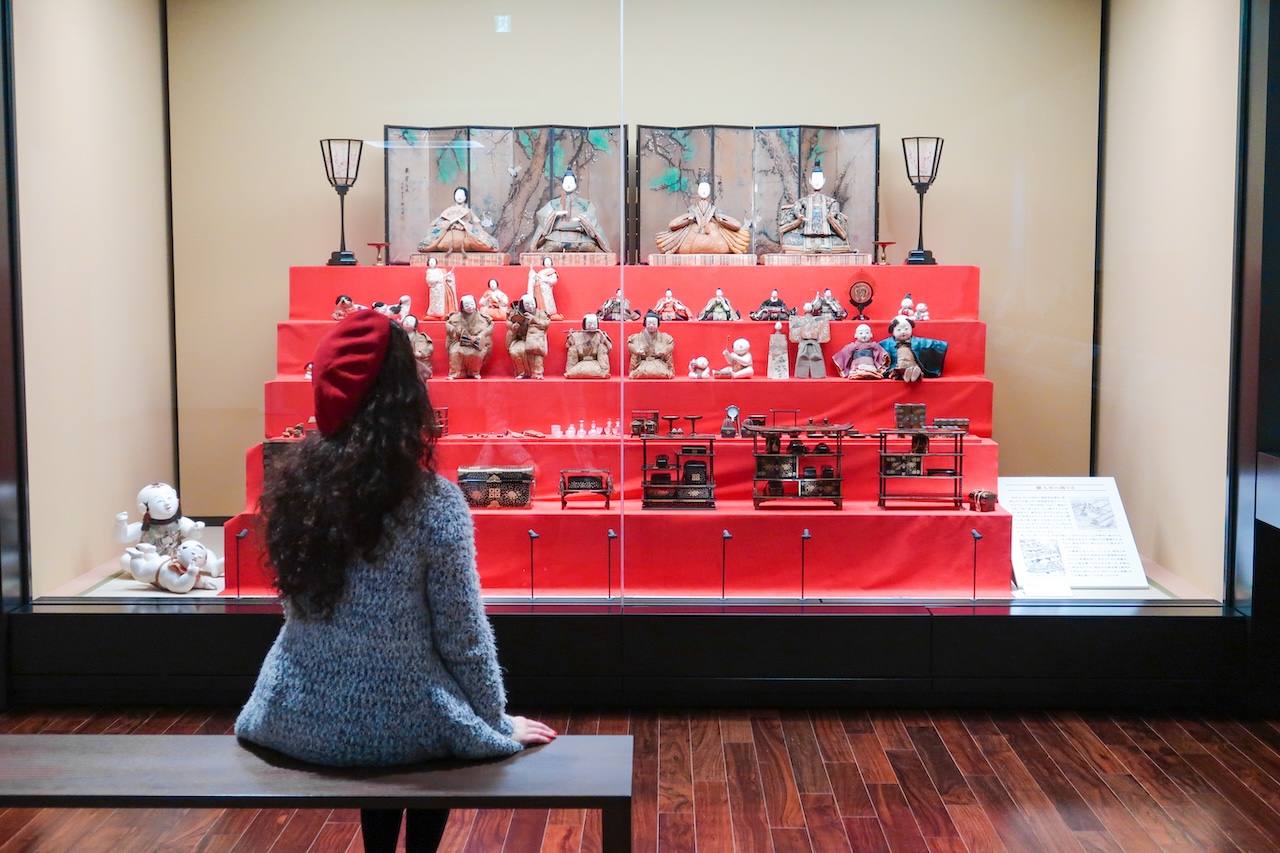
To learn all about traditional Japanese dolls, travelers can explore Iwatsuki, a historic castle town with over 500 years of history, known as Japan’s top town for doll-making. Recognized as a Designated Traditional Craft by the Minister of Economy, Trade and Industry, Iwatsuki dolls are characterized by their slightly large heads and eyes, cute round faces, vibrant colors, smooth white skin, and hair made from raw silk.
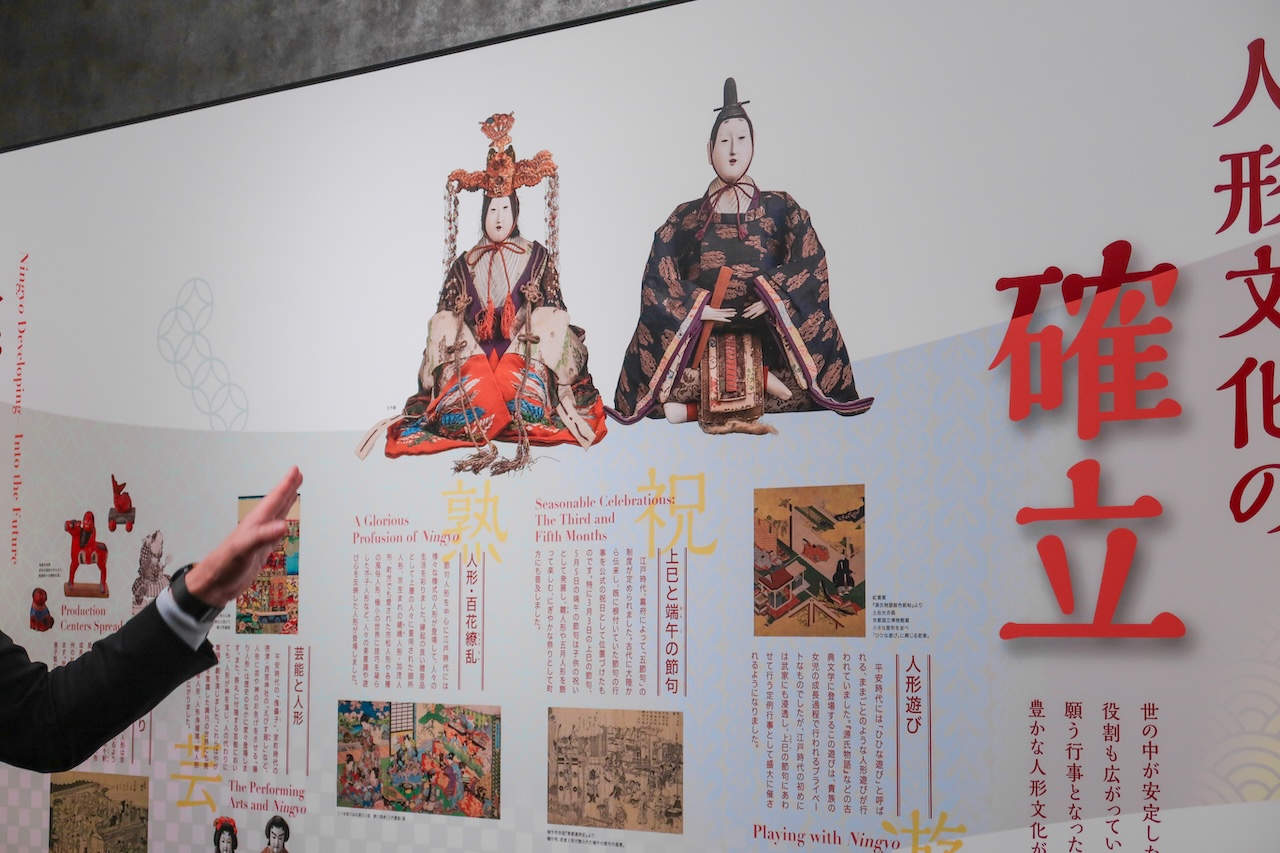
According to one theory, the craft began during the Edo period when the third shogun, Tokugawa Iemitsu, gathered skilled craftsmen from across Japan for the construction of Nikko Toshogu Shrine. As Iwatsuki was the first post town from Edo along the Nikko Kaido road, many of these craftsmen chose to settle there. Rich in timber, Iwatsuki also exported wood to Edo, so some craftsmen started making doll heads by mixing leftover sawdust (especially paulownia) with “namafu” paste (a mix of wheat gluten and rice flour) and kneading it into a clay-like consistency—marking the beginning of Iwatsuki’s unique doll-making technique.
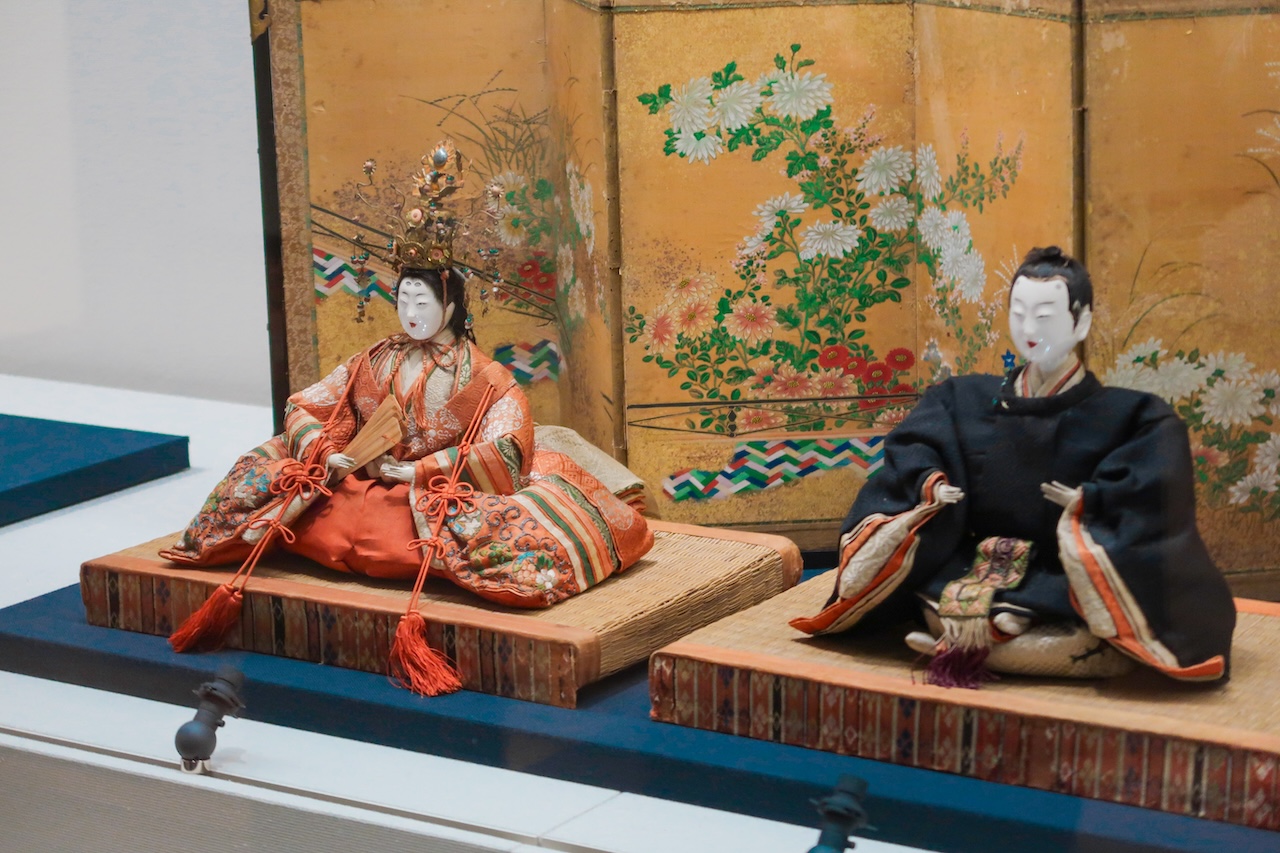
In the mid-Edo period, there was enormous demand for ningyo, due to the rise in popularity of “hina asobi” (doll play), as well as due to the use of dolls in Hina Matsuri, Japan’s Doll Festival or Girls’ Day, when dolls are displayed in the home and parents pray for their daughters’ health and happiness. Against this historical backdrop, Iwatsuki gradually emerged as a thriving center for doll production in the early modern period. To this day, Hina ningyo remain highly popular, frequently appearing in Japanese pop culture and maintaining their close association with Hina Matsuri, celebrated on March 3rd.

The Iwatsuki Ningyo Museum, located in the heart of Iwatsuki, is dedicated to preserving the town’s rich doll-making heritage. Opened in 2020, as Japan’s first public museum specializing in dolls, it highlights Iwatsuki’s legacy, granting visitors the chance to see gorgeous traditional Japanese dolls all year round.
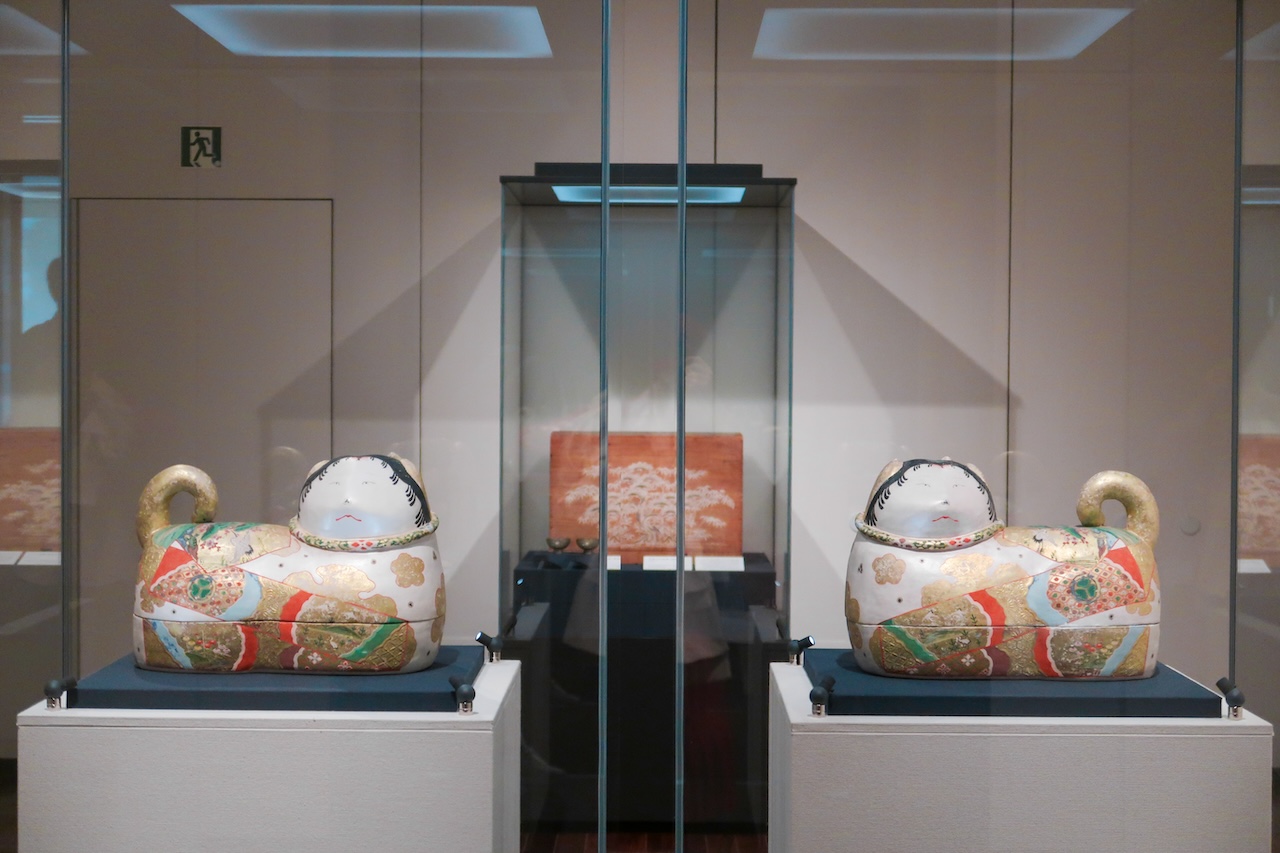
The museum houses an extensive collection of ningyo and related materials, with the centerpiece being the ningyo collection curated by doll and toy researcher Nishizawa Tekiho (1889–1965). Deeply passionate about collecting and studying ningyo, he played a pivotal role in fostering appreciation for the artistic value of ningyo while supporting the growth of ningyo artists.
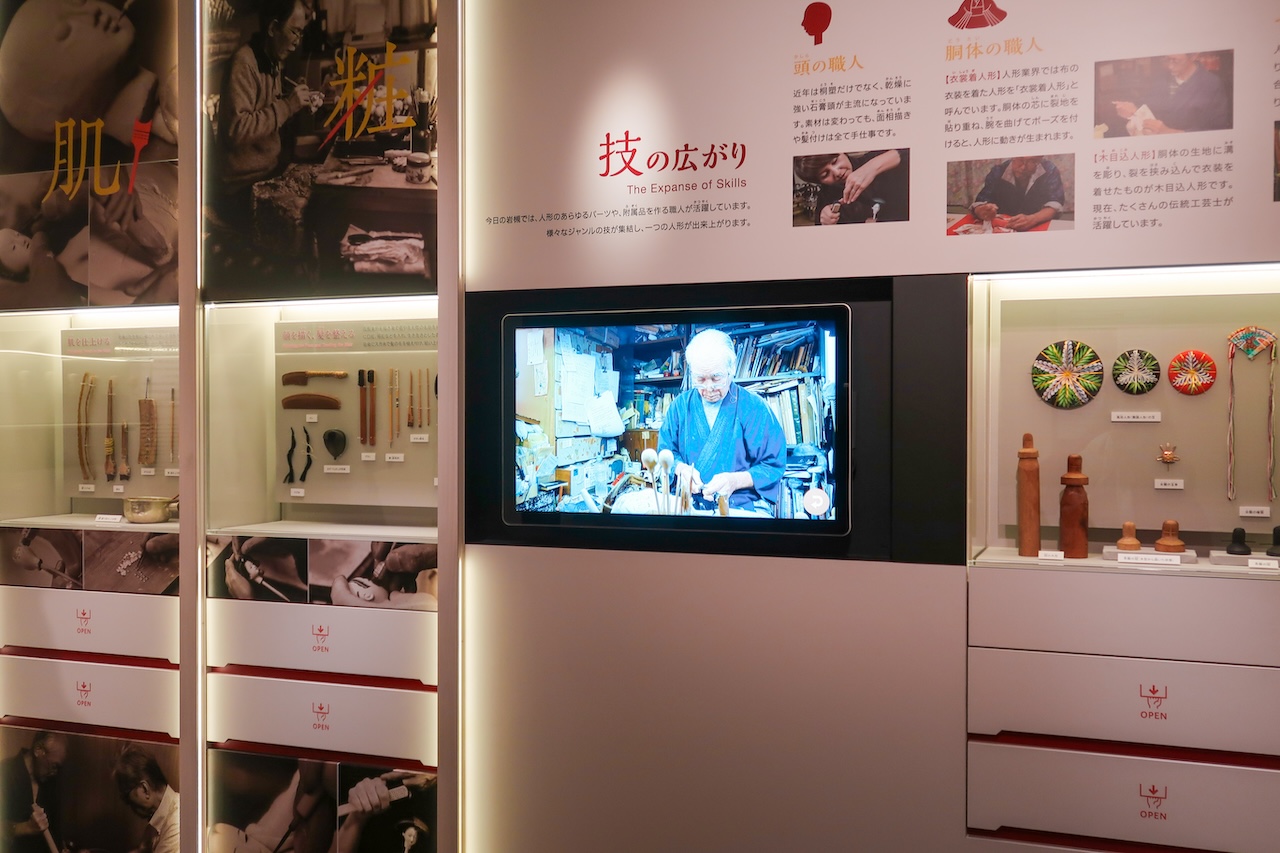
The museum also offers visitors a glimpse into the history of traditional Japanese dolls, providing an opportunity to appreciate their significance and beauty. Exhibition Room 1 focuses on the doll-making process, featuring tools, materials, and videos of craftsmen at work. Exhibition Room 2 includes an exquisite range of different Japanese dolls, such as Hina dolls, Gosho dolls with their chalk-white skin and plump, childlike forms symbolizing health and prosperity, and Saga dolls, celebrated for their vibrant colors. As you immerse yourself in this world of classic ningyo, take note as well of the extraordinary variety of types of Japanese dolls and of the crafting techniques employed to create them.
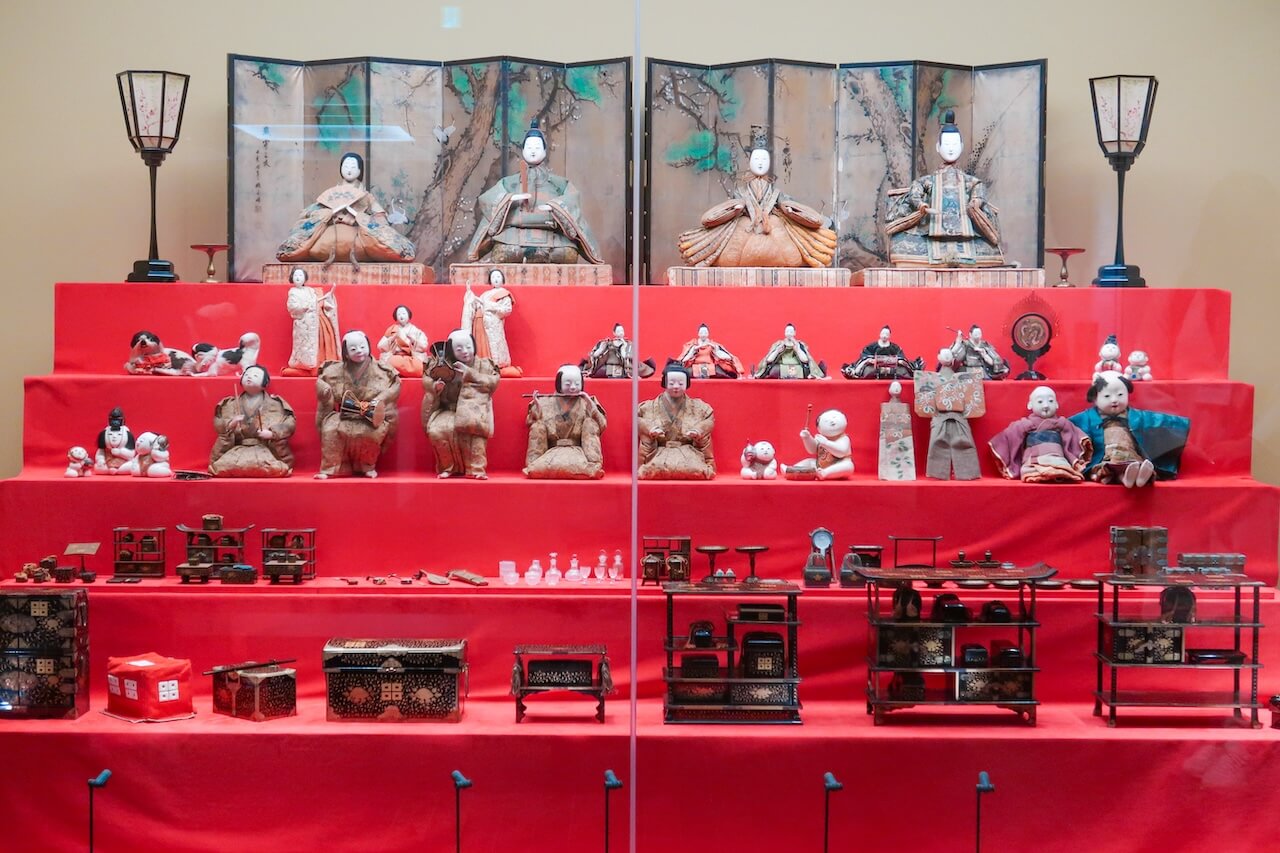
One of the best ways to connect with this tradition is through hands-on workshops. In Iwatsuki, travelers can try their hand at creating their own “kimekomi ningyo” (dolls crafted by carving grooves into materials like paulownia clay and inserting strips of cloth into these grooves). From carving and cloth placement to painting, this interactive experience allows visitors to appreciate the craftsmanship involved in Japanese doll-making while gaining a deeper understanding of its cultural significance.
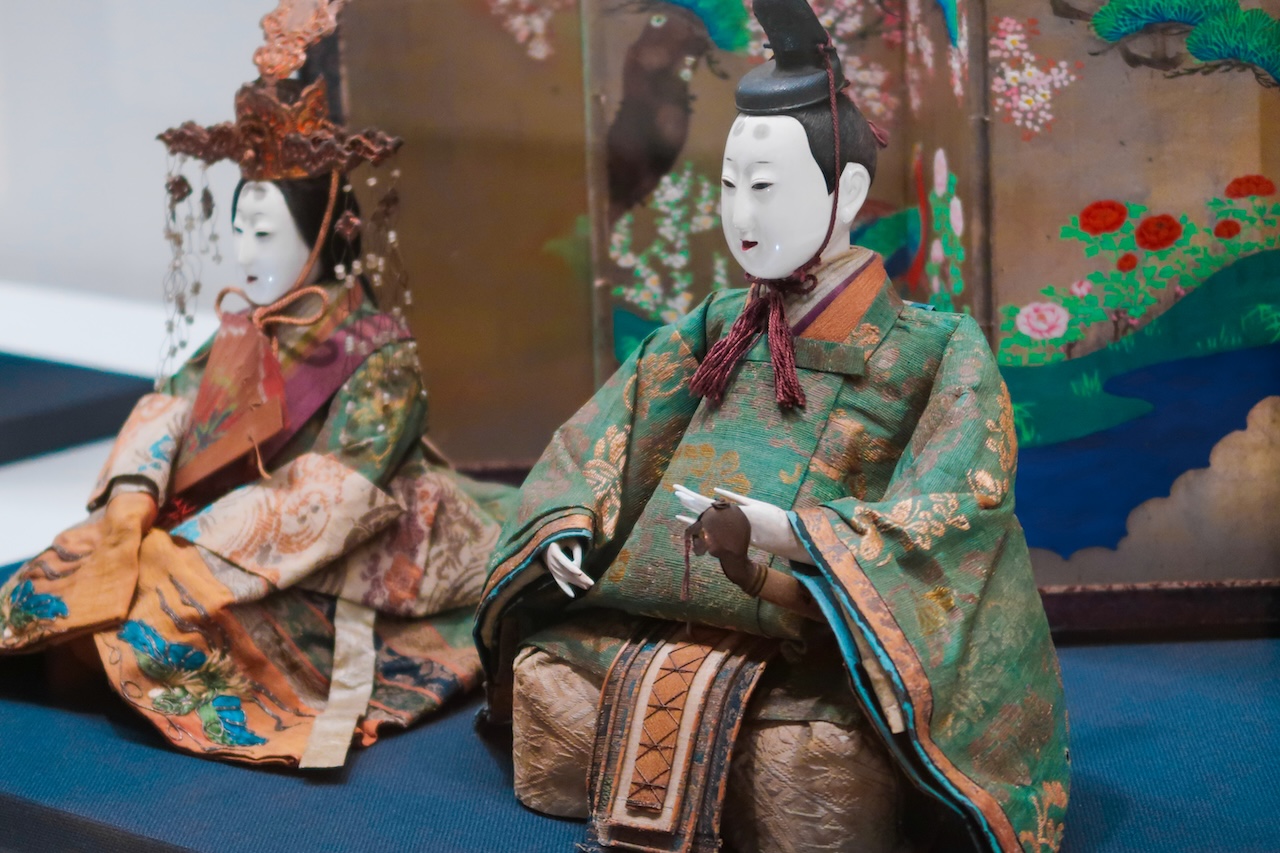
In conjunction with the Hina Matsuri Doll Festival, Iwatsuki City also organizes the “Hina Meguri,” an event where the town transforms into a vibrant celebration of dolls. Local shops showcase their prized doll displays, while many restaurants and cafes offer special doll-themed menus and treats.
Address: 6-1-1, Honcho, Iwatsuki-ku, Saitama-shi, Saitama
Access: 10-minute walk from the East Exit of Iwatsuki Station on the Tobu Urban Park Line
English Website: https://ningyo-muse.jp/modules/info/index.php?action=PageView&page_id=13
Discover Omiya Bonsai: A 100-Year Tradition of Art and Beauty
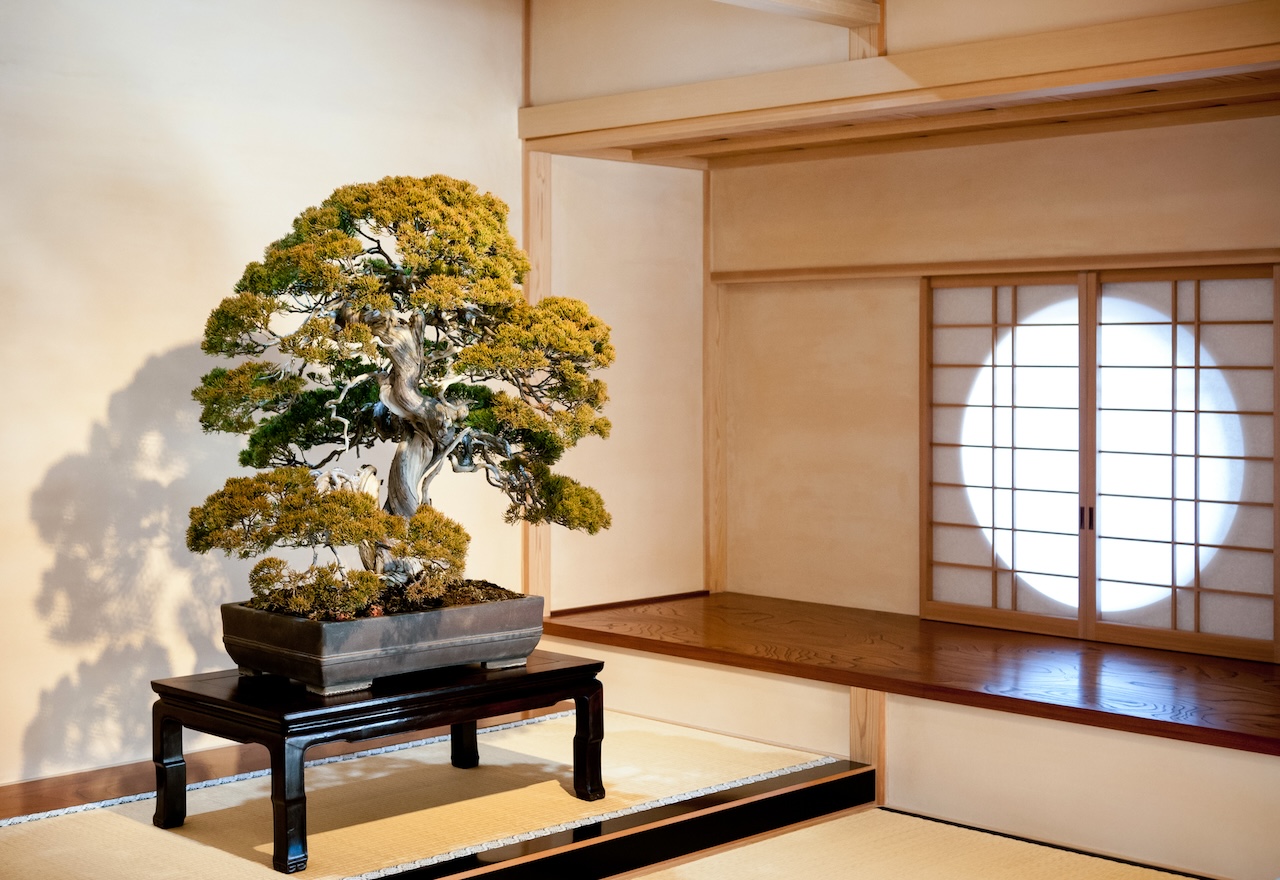
Near Musashi Ichinomiya Hikawa Shrine lies the renowned Omiya Bonsai Village, home to some of Japan’s most famous bonsai gardens and the Omiya Bonsai Art Museum, Saitama.
The Omiya Bonsai Art Museum, Saitama, opened in 2010, offers a deeper understanding of bonsai through English audio guides and informative exhibits. The museum showcases various bonsai styles, pots, and stones, helping visitors appreciate the intricate craftsmanship of the art. With its garden currently under renovation, you can look forward to an even more captivating experience when the museum reopens in March 2025!
Address: 2-24-3, Toro-cho, Kita-ku, Saitama-shi, Saitama
Access: 5-minute walk from the East Exit of Toro Station on the JR Utsunomiya Line
10-minute walk from Omiya Koen Station on the Tobu Urban Park Line
A Cultural Journey With Musashi Ichinomiya Hikawa Shrine, Iwatsuki Dolls and Omiya Bonsai
Dive into the essence of Japan’s traditions with a visit to Musashi Ichinomiya Hikawa Shrine, where 2,400 years of history await. Continue your cultural journey through the cherished doll artistry of Iwatsuki and the serene bonsai gardens of Omiya. This Saitama itinerary ensures a memorable exploration for all who seek to experience the soul of Japan!
